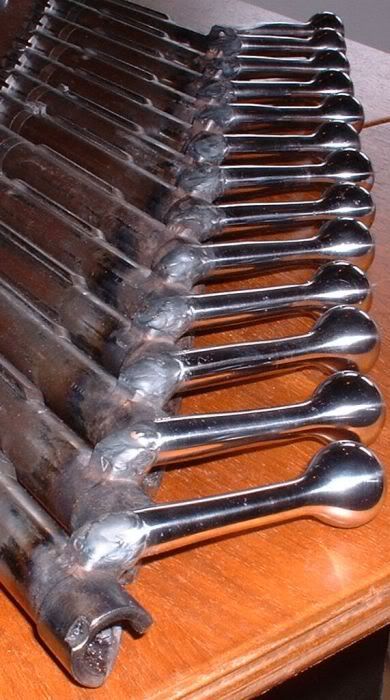Turkish Mausers
For an indepth examination of the whole gamut of "Turkish" mausers (original and rebuilds and newbuilds) go to Parallax's Curio and Relic Gunboards on Yukos.
Basically: Turkish Mausers go in several groups. All the "German made Turkish Contract" Mausers ( M90,M93, M1903, ) are Small Shank barrels (.980 approx., 12tpi, Whitworth Form (55 degrees): originally in 7,65 Turkish Mauser (7,65x53) they were nearly all converted in 1930-1945 to 7,9mm Mauser cartridge.
These early contract rifles were all "intermediate" action lengths, and the 1903 was a direct copy of the Gew98, but with a shorter Bolt (intermediate size)
The WWI donation rifles from Germany ( Gew88/05, Gew 98 and Kar98a) all originally in 7,9mm, have (M88/05) a .980 Barrel, the Gew98/Kar98a has a 1.010 barrel shank (Large Shank), but both 12 TPI/55degree...The early 1920s Czech Vz98/22 is identical to the Gew98.
In 1938, Turkey erected a fully equipped New Factory at Kirikkale, outside Ankara, with ZB (Brno) Technical assistance and machinery. They decided their New Mauser Rifle, in 7,9mm would be a combination of early Turkish Mauser features, with included Gew98 improvements, on a common M1903 Woodwork and Furnishings.
The distinguishing features were Gew98 Bolt lenght ( so interchangeable with German WW I G98s and the Czech 98.22), large ring receiver, but small shank barrel thread ( so barrels essentially fittable to all the small shank receivers already in existance) and the stockwork the same as the M1903 type ( same bayonet fittings)...only hand fitting of wood to metal required.
Kirikkale ("K'Kale" marking) receivers were made 1939/40 to 1946, in Long Rifle form, and 1944-46 in short rifles form. Approx. 250,000 long models were made, along with about 15,000 short rifle models. (See DocAV Serial Survey, Parallax Turkish board)
Barrel threading: Since there is Factory Tolerance between the different types of Actions of up to 5 thou. of an inch either way on diameter, one should measure the Receiver, and then cut the Barrel shank accordingly.
Also, the depth of thread into the receiver varies with different types ( ie, the Position of the "shoulder" separating thread from Re-inforce of shank.)
Cut a 55 degree thread...using US 60 degree is a cop-out, also because the thread form is totally different. Most Thread gauges have both 55 and 60 tool angle gauges built in, so if needed, one can grind one's own tips (HSS)...I have a Threading cutter tool holder which takes continuous 55 and 60degree adjustable cutters ( grind off top to get sharp edges.)
Range of calibres usable: For pre-1914 Contract rifles: medium ( 40-45,000
psi cartridges up to 7,9 Mauser in the 1903 model.The earlier receivers are 110 plus years old, and should be treated with due deference.
WWI Mausers: these are G/Kar 98 actions, and suitable for most up to 48,000
psi cartridges, but NOT those which require extensive action work; same for the Vz98/22 action.
Kikkale actions: as for Gew98 size actions, no cartridges beyond 48,000 psi normal working pressure. But no overlong cases which require action remodelling.
Remember, these rifles are at least 64 years old ( 1946 K'kale) or up to 110 years old ( M90 or M88/05/35) and with structural issues as well (small ring receivers, no third safety lug as in Gew98, etc.
Handle with care.
Better still, a good Kirikkale ( clear bore, slick action, good stocking up) can be as accurate as any spruced up Springfield or Lee-Enfield.
regards,
Doc AV
AV Ballistics.



